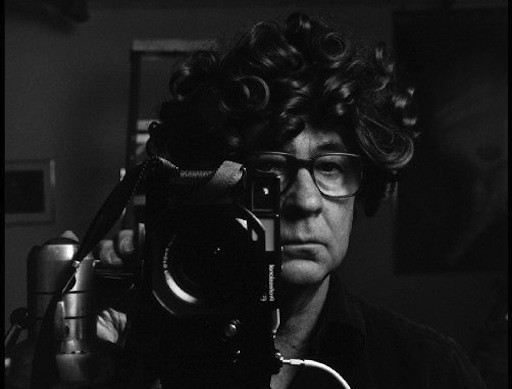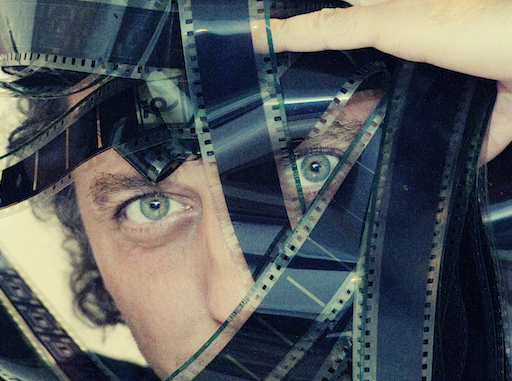The painter Natalie Frank stands out from many of her artistic peers for her unexpected approach: a passionate embrace of the classical traditions of painting and printmaking. Using an exquisite technique that carries echoes of such masters as Rembrandt and Velázquez, Frank directs her artistic arsenal at the often cruel or manipulative ways that people interact, creating atmospheric canvases that are redolent with drama and, often, the macabre. To mark her new show running at New York's Fredericks & Freiser Gallery (through November 4, 2012), we spoke to the artist about her work
For most of your life you were only able to perceive the world around you in two dimensions, not three, but you didn't realize you saw differently than anyone else. A few months ago an eye doctor was able to diagnose and correct this condition, allowing you to see in three dimensions for the first time. How has that affected your art?
A friend recently shared an article from the New England Journal of Medicine that talked about Rembrandt having the same condition. And Picasso, too. Someone is putting together a book now of artists and their eye ailments; I am in good company! After 32 years of seeing in two dimensions, I am not sure these past months have changed anything, yet. But, the knowledge of how I am now seeing and have seen is certainly having some profound psychological effects: I can't believe all of the space and air I have missed through the years.
Your artworks frequently include disturbing subject matter, with some scenes seemingly inspired by horror movies (or grand guignol) while other paintings uglify your subjects with hideous facial distortions. How do you choose your subject matter, and what draws you to dark themes?
I don't think about the grotesque when I work-it's just life as I see it. All of the shifting power dynamics between people, men and women, women and women, women and themselves. I admire a lot of writers who seem to float along the edge of Magic Realism and the everyday. This is where I would like my paintings to be located.
In your show at Fredericks & Freiser Gallery, you have several enormous, large-scale paintings in the front room and small canvases in the back. How do you approach these scales differently, and how does scale affect your work?
A wonderful question. The larger and smaller paintings function in very different ways. The larger ones are more challenging, they are about constructing puzzles and their surface area allows me to replicate the viewer and her space. I am creating worlds. The smaller portraits are more like peepholes-dangerous in other ways! They are much more about voyeurism and tend to be lighter in tone. Perhaps they are like character studies, if the larger paintings might be novellas.
You are a tremendously talented painter of classically honed technique-a rarity in the contemporary art world these days. How did you train yourself to master the medium, and what is it that especially appeals to you about painting?
Thank you! The last body of work I showed was much more focused on technique. At the end of the day, however, this is not enough for me. It leaves me dry. Technique should be a means to an end, whatever sort of technique it might be. I started studying from life when I was young, and painting from life at the Slade in London that has the amazing traditions of the School of London. I have never been a great draughtsman—I think my talents lie in my hand and in my sense of color. And in the perverse narratives that result from the ways in which I see the world. Technique without a voice seems pretty hollow.
The influences present in your work seem to range from Chaim Soutine and Francis Bacon to the Old Masters. How do you use art history to help shape your work?
There are so many artists to love—and so many contemporary ones, too. My favorites are those that subverted the traditional modes of their times. Degas I love for his brutality; Velazquez because he made everyday life and proscribed subjects human and complicated and existential; and Tiepolo and Titian for their vibrant and individualized use of color. The artists I look at the most today are not necessarily painters, though I love many of the Leipzig school. Mike Kelley and Robert Gober seem to get at it perfectly with their perverse humor, narrative storytelling, and ability to combine the grotesque with levity and self-awareness.
What made you want to become an artist?
I have always wanted to tell stories. And to give a voice to women's unspoken desires.
What was your first significant art experience?
The Brancacci Chapel in Florence. Massacio! I dream about creating a room of creatures and narrative: life-sized figures marching out of the walls.
How do you get your creative juices flowing?
They seem to always be flowing. When I get stuck, I take a day off and read.
What do you hope other people get out of your art?
This question is the most important one for me: I want people to feel something, without any sort of prescribed program. I want there to be a vague sense and awareness of what it means to be human, to examine what some of these shared stories are. The specifics should depend on the person.
What's your favorite thing you've ever made?
When I was young I was a bit antisocial. I would sit for hours and make sheets and sheets of doubly symmetrical, brightly colored designs with markers from those packs that had over 100 colors. My mom still has a few.
What would you be doing if you weren't an artist?
I would be working with human rights—a field related to separation of church and state, or towards protecting women and their rights.
What is indispensable in your studio?
Me! And imagery, culled from every imaginable source.
What do you collect yourself?
Kara Walker, Dürer, Goya, Kathe Kollwitz, Angela Strassheim, Jeff Whetsone, Tibetan thangka painting, Les Rogers, Emily Noelle Lambert, and tapestries from South America.
Is there any other art-historical period that you wish you could have lived through?
I am thrilled to be here, now.
Do you think that it's okay to break the law for the sake of art?
It depends on what the law is?
Who is your favorite living artist?
Robert Gober.
Who is your favorite historical artist?
Velázquez or Degas.
What is your favorite place to see art?
Paris and Florence.
What artwork or art destination would you most like to see?
I am off to see the Ghent Altarpiece and the Isenheim Altarpiece next month. I am obsessed with both.
What book has had the biggest impact on your work, or life?
Disgrace by J.M. Coetzee.
What artist or artists do you think should enjoy greater recognition?
I have so many artist friends I admire. Recognition seems so fickle. Sometimes recognition isn't the best path for an artist that is still developing.
What is an artist's responsibility in society?
To use their talents to communicate a narrative they believe in.
If you could get any artist to do your portrait, who would you choose?
John Currin—and I would be topless. He lives around the block from me; I have thought about proposing this when I see him at the neighborhood diner.
Meet the ArtistArtist Natalie Frank on "Giving Voice to Women's Unspoken Desires"
























